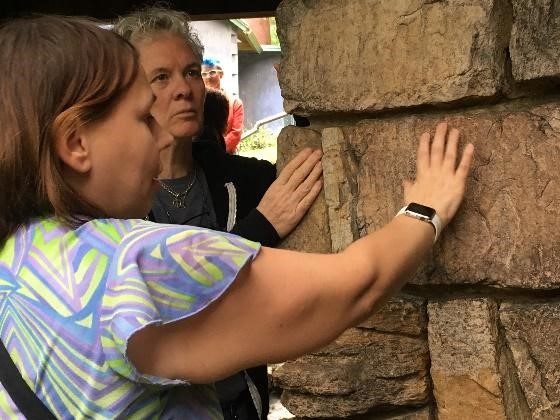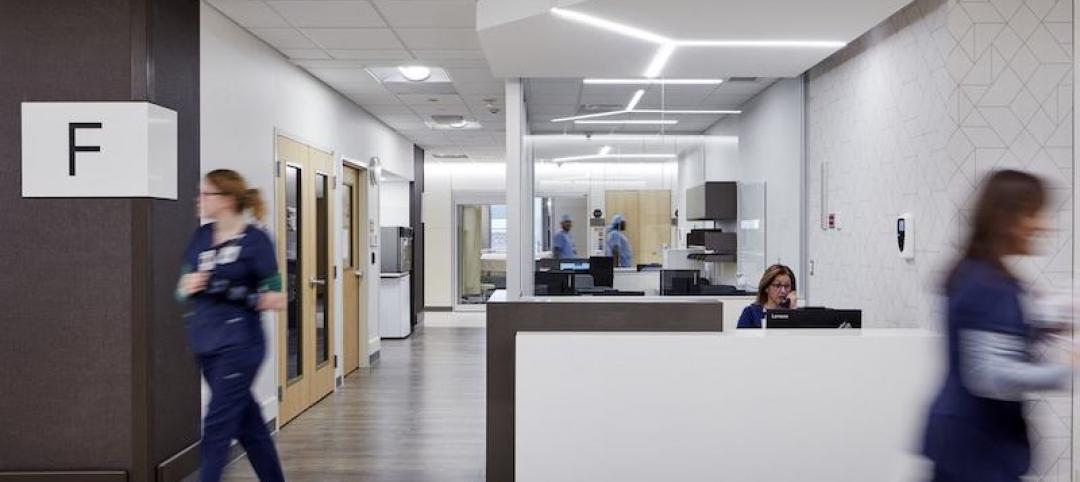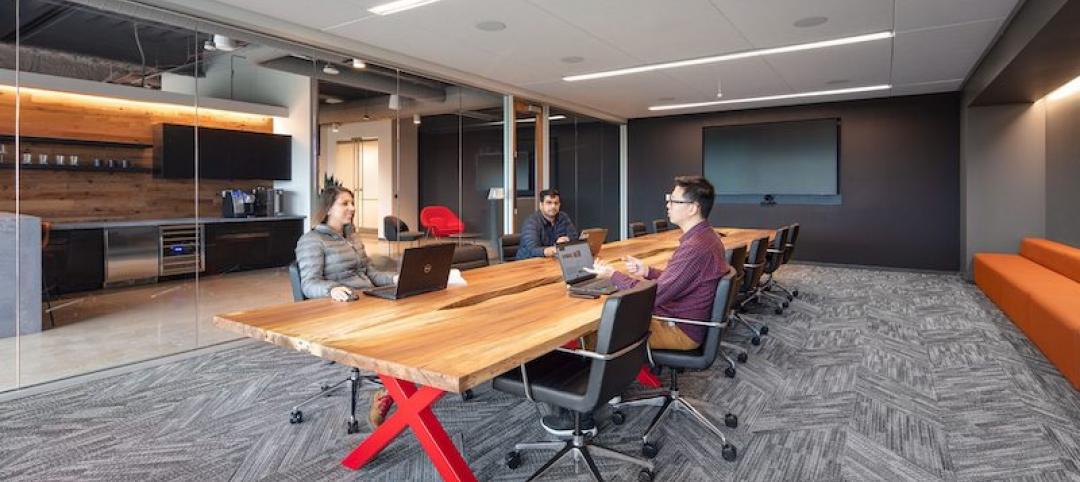Traditionally, campuses have been designed for the able-bodied, college-age student from the majority culture who enrolls full-time. But today’s campuses—from residential to commuter, four-year to community college, research to liberal arts—are now serving students from a wider demographic with a broader range of life experiences.
Campuses are responding to these changing demographics through a range of inclusive initiatives. The built environment is one of the most powerful expressions of an institution’s values and often must change to communicate that all are welcome. But campuses are still unsure how to translate equity into the facility planning process and communicate inclusivity through architecture.
How do campuses throw open the doors to become truly welcoming? Several recent projects offer encouraging possibilities—reinforcing the motto that has long served disability rights advocates: “Nothing about us without us.”
Student Visioning at UVA
For a feasibility study at the University of Virginia (UVA) in Charlottesville, a team of students, architects, and ethnographic researchers helped redefine the role of UVA’s aging Student Activities Building (SAB) serving student-led arts and cultural activities in the context of the campus Grounds. Applying a variety of ethnographic and digital spatial-mapping tools to track student activity in and around SAB and adjacent buildings, the research team—consisting of more than 200 students over a four-month period—evaluated primary data to co-create several design options in two ideation workshops to boost SAB as a multipurpose hub for student groups, meetings, and events.
Significantly, the project placed students at the forefront of the planning process, engaging a diverse group of student body representatives and student leaders in focus-group and town-hall discussions alongside consulting architects, the Facilities Planner with the Office of the Architect, and the Assistant Vice President of Student Affairs.
As a key finding early on, the group determined that the student committee needed to be expanded significantly and the process needed to increase transparency to be truly inclusive of all users of the building. Students took the lead in bringing more varied voices to the table. The result was to engage students in the programming and design of the project at a variety of scales to draw them in and make it clear that their voices were valued, and their creativity and insight could make an impact. Through their involvement, they showed that it would be possible to welcome and create more interaction among students from diverse backgrounds by expanding the building program from a single-use facility to one that supports multiple concurrent uses.
Gender Equity at Cornell
In another instance at Cornell University in Ithaca, New York, students and administrators identified the need for a new Rowing Center on Lake Cayuga to accommodate its growing Men’s Heavyweight, Men’s Lightweight, and Women’s rowing teams.
The original rowing facilities included the two-story Collyer Boathouse built for the men’s teams in the 1950s, and an adjacent one-story Robison Boathouse added for the women’s team in the 1970s—with men and women sharing the training room on the second level of the men’s facility.
The boathouses lacked amenities to fully support the growing teams and gender equity. For instance, to access the training room in Collyer, women had to enter through an exterior stairwell or go through the men’s locker room. Additionally, the women’s crew had tripled since the 1970s, yet the locker rooms were one-third the size of the men’s locker room.
Planning sessions stressed gender equity and elevating the rowing program’s overall campus visibility. As such, the design solution repurposed the two facilities, adding a two-story addition to Collyer that included separate locker rooms for the three teams; converting the first floor of Collyer into an expansive entrance lobby and gathering space; upgrading and expanding the second-floor multipurpose training room into a bright and welcoming space with equal access; and repurposing Robison into equipment storage.
The result is a rowing program that architecturally places men and women’s teams on equal footing while inviting the wider campus to participate in events, creating a waterfront destination that identifies Cornell Rowing as a distinct brand.
Inclusive Experiences
Designing from an equity lens also considers how to make the campus experience as seamless as possible for people with special needs. Many campuses, for instance, have art museums and performing-arts centers, designed generally for the able-bodied student. But how, for instance, does someone with vision impairment enjoy an art exhibit?
The Wharton Esherick Museum in Malvern, Pennsylvania, has proposed one solution with its Touch Tour, a specially designed tour of the museum that encourages attendees to touch the namesake’s wood-crafted artwork—often taboo in most exhibits.

HGA created a touch model of Esherick’s home and studio so that visitors with limited vision can finally experience the largest piece in the museum’s collection—the very building in which the piece were built and that houses the work today. The lesson learned in this process is that heightened interpretive experiences for one type of user can often help all users. In this case, visitors with full sight can learn more about Wharton Esherick’s work as well through use of the touch model.
Campuses themselves can find lessons here to think creatively about staging interactive exhibits and events that encourage fresh perspectives. A vision-impaired student can enjoy an exhibit while inviting sighted students to experience a unique viewpoint—encouraging inclusion for all.
Looking Forward
Designing from an equity lens is about listening without assumptions and creating experiences that all can share. When approaching your next campus project, consider these suggestions:
Identify Stakeholders—Start by identifying your stakeholder groups, thinking broadly about who they are and how to expand the potential pool beyond traditional committee makeup. Committees tend to be heavy on administrators, faculty members, and standout students but light on truly representative students—especially those who by choice stay at the margins. Inclusion can change the outcomes, and certainly will provide experiences that change the students’ relationship to the institution.
Engage Stakeholders—Create dialogue, visioning, and ideation sessions that integrate distinct voices. Surprising and delightful ideas may percolate.
Reverse Roles—Shed preconceived notions about user groups and look at a potential project from another’s eyes. As with the Touch Tour, all can experience something unique by seeing through the lens of another.
By approaching design through an equity lens, the phrase “all are welcome” can truly resonate on campus.
More from Author
HGA Insights Blog | Apr 8, 2021
Designing lab workspaces in the time of COVID
There are two converging trends that will shape this ratio of lab-to-office in 2021.
HGA Insights Blog | Feb 8, 2021
Prioritizing staff wellbeing: A call to action
Recent studies reveal that more than 50 percent of physicians and one-third of nurses experience burnout, HGA researchers have the details—and the evidence-based design interventions.
HGA Insights Blog | Oct 22, 2020
Envisioning libraries as community hubs
In the following, HGA Vice President and Senior Designer Jane Dedering discusses her passion for libraries, community engagement, and how the current pandemic will influence libraries moving forward.
HGA Insights Blog | Aug 6, 2020
Museums emerging from the pandemic: Hands-on learning
HGA Arts & Culture experts weigh in on the future of museums in this ongoing series, Museums Emerging from the Pandemic.
HGA Insights Blog | Jun 17, 2020
Guiding changes in the workplace: Past, present, and future
Since the COVID-19 pandemic, many companies are managing sudden change as they assess the impact on workplace design and how people use spaces.
HGA Insights Blog | Mar 19, 2020
Technology crucial during COVID-19 social distancing
Technology can help bridge the gap during the Coronavirus pandemic as higher education institutes and corporations are moving to a remote work model.












